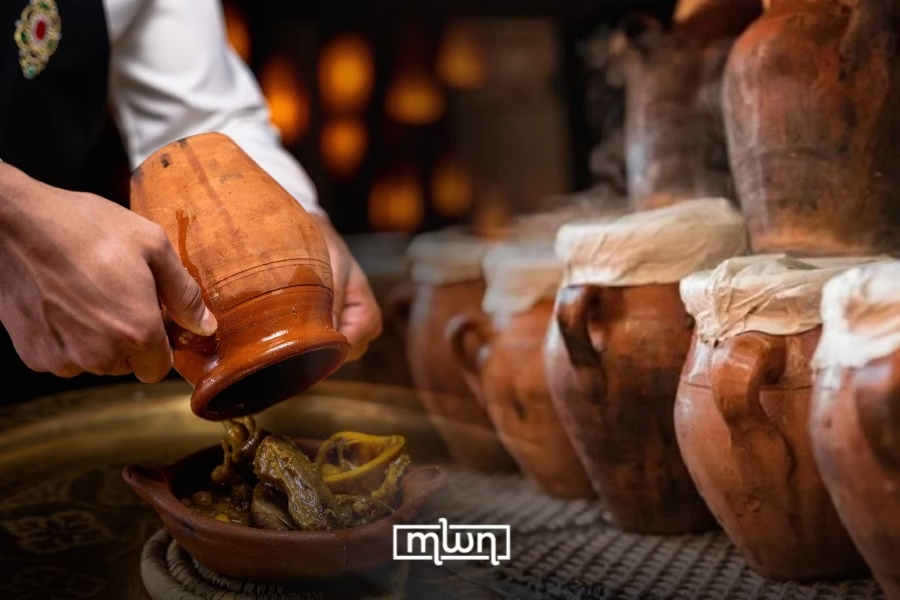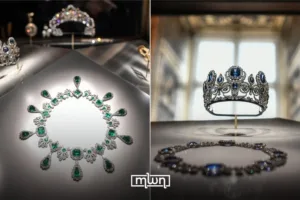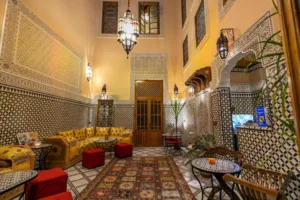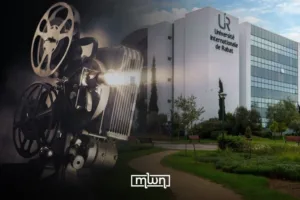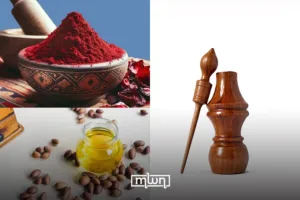Beneath the simplicity of its ingredients, the Marrakchi tanjia reveals a layered history of tradition.
Fez – In the world of Moroccan cuisine, few dishes carry as much cultural weight and legal intrigue as the Tanjia.
This humble-looking clay pot dish isn’t just food. It’s a slow-cooked symbol of regional identity, communal rituals, and, believe it or not, centuries-old jurisprudence.
Yes, Moroccan jurists had something to say about this meaty masterpiece, and not just whether it tastes better with cumin.
So what makes Tanjia special? For starters, it’s deeply rooted in the rich mosaic of Moroccan culinary traditions, which shift in flavor and style from north to south, coast to mountain.
Morocco’s geography has made it a natural crossroad between Mediterranean and African food cultures, absorbing, adapting, and influencing in return.
The Tanjia, particularly the Marrakchi version, is a perfect result of that interaction.
But here’s where it gets spicy: religious scholars once debated Tanjia not for its taste, but for its safety and method of preparation.
One standout voice was the 17th-century scholar and ascetic Abu Abdullah Muhammad bin Sa’id al-Margheeti al-Soussi al-Marrakshi.
Think of him as the health inspector of medieval Marrakech, except with more poetry and less paperwork.
Al-Margheeti wrote a detailed “manzuma” (a poetic legal guide) outlining exactly how “tanjia” should be prepared: tightly sealed, partially buried in hot ashes, and kept far away from impure sources of heat like… burning trash. Yes, trash.
In Saadian-era Marrakech, public bathhouses often used garbage as fuel, since firewood was reserved for sugar production, an industry that had already chewed through entire forests like Chichaoua. You can see how this might raise eyebrows and legal questions.
Is it still halal if your dinner was cooked over flaming filth? What about the fee you pay the bathhouse worker who slow-roasted your meat in that smoky inferno?
Al-Margheeti says: if it’s cooked with trash, accept your meal and tip with grace, but don’t expect to set a price. If clean wood or charcoal is used, the cook can name a fair wage. It’s a poetic yet practical blend of ethics and etiquette.
Fast-forward to today, and we face new but related concerns. Some modern Tanjia pots are fired in kilns fueled by burning rubber and industrial waste, which poses serious risks to both health and environment.
Even worse, many pots are glazed with lead-based coatings. When heated, especially with acidic ingredients like preserved lemon, that lead can leach into the food. And yes, ingesting around 10 grams of lead can be fatal.
The legal principle remains timeless: harm must be removed. So, we’re not against Tanjia, just the kind that poisons people.
If producers want to protect this four-century-old culinary legacy from vanishing into the bland abyss of global fast food, they must meet modern standards.
Clean fuel. Safe materials. Respect for tradition, yes, but also for science.
Because at the end of the day, Tanjia isn’t only food. It’s a story. A ritual. A responsibility.

